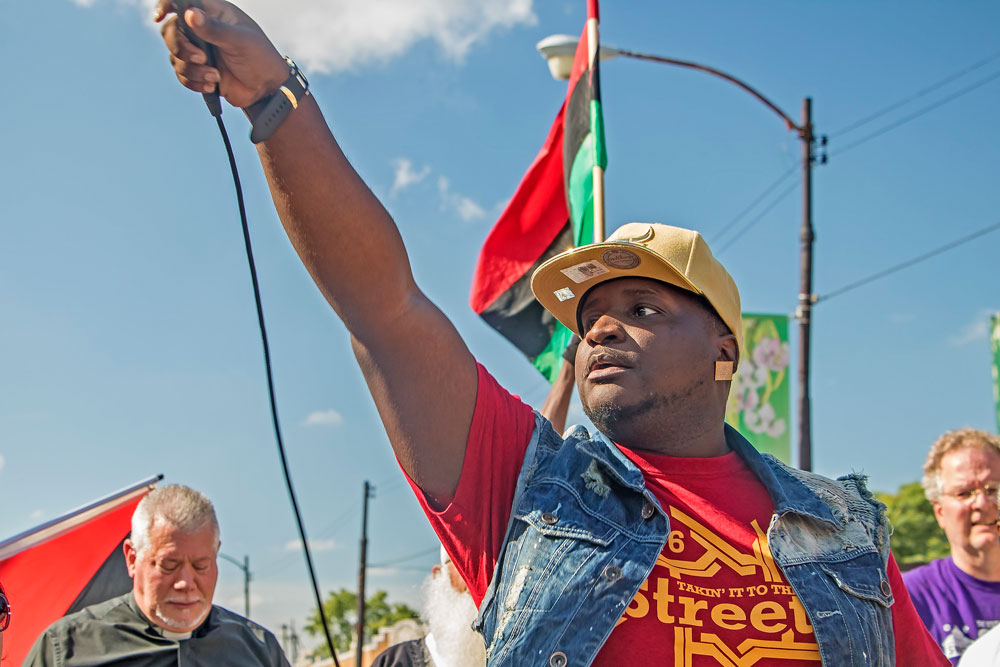
June 29, 2020; ProPublica (with the Connecticut Mirror)
Fair housing remains out of reach for too many people. Even at this moment, over 50 years since Congress passed the US Fair Housing Act into law and more than 50 since Dr. Martin Luther King Jr. went north to end segregated housing in Chicago, it is impossible to ignore. We still live in a nation of neighborhoods engineered by policy to separate rich people from poor people, and communities of color from white ones. And for many, homeownership remains an unrealized dream.
Connecticut seems like an auspicious place for positive change. It has a Democratic governor and legislature who can hear the rising tide of progressive voices. Yet its housing is among the most segregated in the nation.
State Senator Doug McCrory, the vice chairman of the Housing Committee, sees the opportunity for change quite clearly. He tells ProPublica, “If we don’t do it now, we will never get it done.”
No longer do we chip around the outside and do what I call Novocain legislation That’s what we’ve been doing ever since I’ve been here. Just a little here. Just a little there because we don’t want to offend anybody. We don’t want anybody to be upset. No more. This is the time for the state of Connecticut to step up to the plate and be bold.
Despite turning out in large numbers in public demonstrations to proclaim that Black Lives Matter, many white people seem less willing to make Black neighbors welcome. The battleground is towns that, as one picket sign held by protester Brian Murray declared, have “No Black teachers. No Black police officers. No Black board members. No Black…government office members.”
Holding back change is an unwillingness to amend zoning laws and building codes that protect the privilege of wealthier, largely white, communities. Richard Freedman, a developer with a history of fighting local officials to build affordable housing in high-end communities, put it bluntly in comments reported by ProPublica: “Segregation is one of the roots of the evil in our society, and it’s perpetuated by exclusionary zoning. Let’s just call it what it is, it’s Jim Crow Zoning. It’s a system of social control, an insidious, complicated system of social control, just like the old Jim Crow laws.”
The predominantly (85 percent) white community of Weston (population 10,000) provides one example of how this system of social control works. When Ken Edgar, the chairman of Weston’s Planning and Zoning Commission, tells ProPublica that “Fundamentally, this is who we have been for a long time. We are trying to move the ball, but there would have to be demonstrated interest before I think we move the ball further and build diverse housing on small lots,” he’s almost channeling President Richard Nixon, who defended the status quo, equivocating legal segregation and forced integration of housing or education as equally wrong.
Sign up for our free newsletters
Subscribe to NPQ's newsletters to have our top stories delivered directly to your inbox.
By signing up, you agree to our privacy policy and terms of use, and to receive messages from NPQ and our partners.
Jim Marpe, a Republican village selectman, in comments to villagers, was even clearer about what local interests were being protected: “The challenge to our community is not just to the character of neighborhoods, but also to firefighting and police response, potentially to educational capacity, to human services support, and to our tradition as a single-family home community.” These euphemisms have become dog-whistles for racism.
And, leaders like Governor Ned Lamont, faced with this resistance, have dragged their feet. Max Reiss, his spokesperson, said “the administration prefers to work collaboratively over forcing towns to allow projects that they don’t support.”
The state Department of Housing, he said, is currently building an affordable housing “toolkit” for local officials “to make it easier to communicate the issue to their local communities. “By working together toward a common goal, we can be much more successful, and effective. Divisive policies which promote conflict and inhibit growth are at the heart of the problems in this country.”
As people continue to rally for change, perhaps this time the country will get it right and overcome inertia. Fionnuala Darby-Hudgens of the Connecticut Fair Housing Center recognizes that showing up at a protest is quite different from making the sacrifices that are now necessary. “The irony of BLM protests in white communities is it is these same towns that repeatedly block the development of affordable housing, which we know is an efficient way to promote integration.”
Karen DuBois-Walton, president of the housing authority in New Haven and a member of the State Board of Education, saw the protests as masking reality and that things have actually gotten worse over time, “evolving from being labeled NIMBY (Not in My Back Yard) to BANANA (Build Absolutely Nothing Anywhere Near Anyone).”
“If we continue to subscribe to zoning policy that reinforces what we have at this point at the long end of a long history of inequity,” DuBois-Walton warns, “then we will be agreeing that we are going to continue to reinforce racist policy.”
Protester Rodney Williams made clear the meaning of this moment. “When the man was saying, ‘I can’t breathe,’ the truth is America has had [their] foot on our neck ever since we [were] young. If we had access to opportunities, we could afford to live where we want to live. We should be able to live where we want to live.”
The answer will come as zoning struggles play out in towns like Weston, in city halls, state capitals, and the halls of Congress in Washington. Will this be the time when those with privilege give up their control and special status? It will be important to watch whether pledges of anti-racism this time are acted upon in policy changes that affect home values—or if white backsliding occurs once again.—Martin Levine













